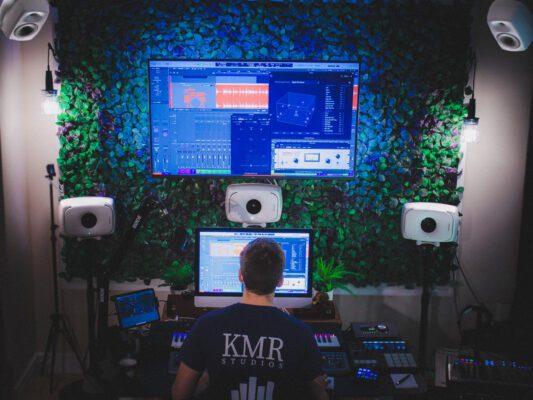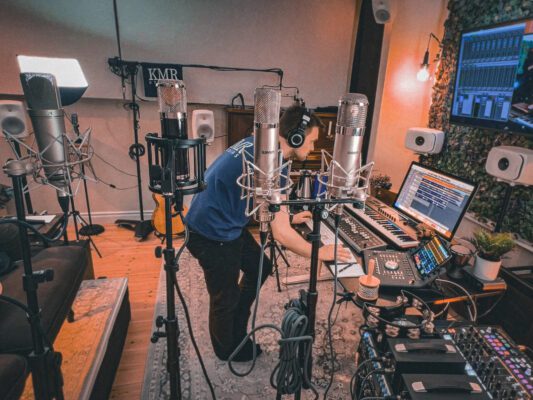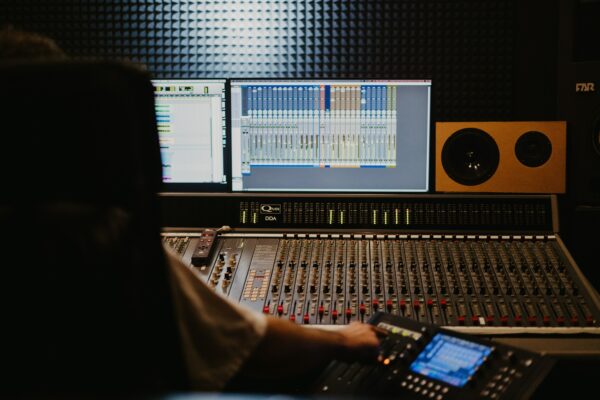Four Tube Microphones and a Neumann
In this article, we write about how we decided which microphone would be our next purchase for the studio. We discuss prices, areas of use, how we tested the microphones, our thoughts on the choice of microphones, and finally, the selection of the winner.
If you are considering purchasing a new microphone, we highly recommend that you contact our friends at Uppsala Musikverkstad or msonic as they will be able to assist you further. If you have specific questions about the article, our studio, or music production, please do not hesitate to contact us.

Which Microphones Did We Test?
We tested three microphones from manufacturer Warm Audio and one from Vanguard, and then we also used a U87ai from Neumann as a reference microphone. Below is a summary of the names of the microphones, prices, and links to where they can be purchased. There is also the opportunity to test the microphones in our studio.
- Vanguard V13 gen2
Retailer: msonic
Price: approx. 13,000 SEK - Warm Audio WA-47
Retailer: Uppsala Musikverkstad
Price: approx. 10,600 SEK - Warm Audio WA-CX12
Retailer: Uppsala Musikverkstad
Price: approx. 13,000 SEK - Warm Audio WA-8000
Retailer: Uppsala Musikverkstad
Price: approx. 13,600 SEK - Neumann U87ai
Retailer: Uppsala Musikverkstad
Price: approx. 36,000 SEK
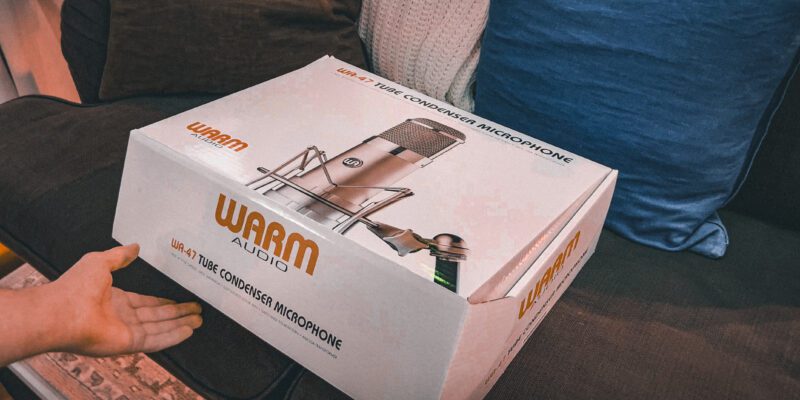
Microphone Sound Test
To test the different microphones, we recorded all instruments and vocals in a song with each microphone. The idea was to give us an idea of how individual instruments were captured by each microphone, but also how the cumulative effect of the microphone sounded in the context of a full production.
What we recorded:
- Vocals and background vocals
- Ukulele
- Bass ukulele
- Percussion
There was undoubtedly a difference between the different microphones. But a more scientific approach to the test would have been to record the same take with all microphones simultaneously instead of making separate recordings. Our idea with making separate recordings was that each microphone would get to record the instrument in its “sweet spot”. Pros and cons, of course. At the end of the day, the result felt good enough for us to draw conclusions about which microphones we preferred and not. It is worth mentioning that unfortunately, the WA-8000 microphone did not get the opportunity to be tested on all elements (only vocals) as we did not have it in the studio at the same time as the other microphones.
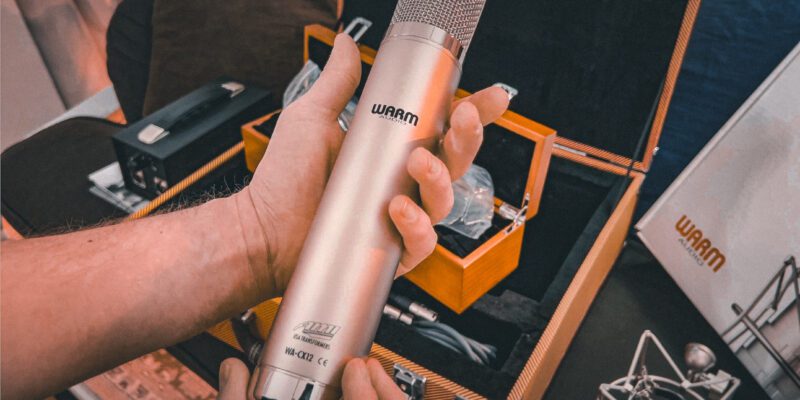
Which Tube Microphone is the Best?
Which microphone one prefers is subjective, so when looking for a new microphone, there are two good questions to ask:
- Why am I buying a new microphone?
- What does the new microphone do that the ones I already own do not?
In our case, the answers to these were; we are looking for a tube microphone as we currently do not have one in the studio. And a tube microphone allows us to give the recordings a different type of “finish” than what we currently have. A tube microphone would not be able to replace any of the microphones we have, but it would complement the collection with its warm vintage sound. The natural compression and overdrive that tube microphones offer would streamline our workflow in some projects as less post-processing with the recording would be required.
In other words, we want to buy a tube microphone for the studio because it sounds great and is different from the microphones we already own.
Why Does the Warm Audio WA-CX12 Win?
As mentioned above, we were looking for a microphone that sounds cool and different from the microphones we already have. Before we delve into why the winner is the winner, let’s quickly go over why the other microphones did not end up there.
The WA-47 was the first to drop off the list of potential winners because, according to our ears, it did not sound comparably as good as any of the other microphones – even in blind tests, it was the easiest to pick out. Especially, it was details that disappeared when recording with the WA-47.
The WA-8000 was dropped from the list even though it sounded great. If we didn’t
already own a Neumann TLM103, it might have felt more relevant. The TLM103 is a FET microphone and not a tube microphone, but the WA-8000 would have been useful in the same situations, and given a very similar result. Which makes it difficult to argue for an investment of 13,600 SEK…
The Neumann U87ai is disqualified because it is not a tube microphone. We included it for comparison. What surprised us the most was how dark it was perceived in contrast to the tube microphones. The U87’s incredible detail and balanced sound are suitable for all situations, which is one of the reasons we bought it a few years ago. The reason we are looking for a tube microphone is that we want something that offers more than precision. We are looking for a microphone with vibe!
The Real Duel
It was very close between the WA-CX12 and Vanguard V12 gen2. We have had the V13 in the studio the longest and have been very satisfied with it. But already in the first recording with the CX12, we understood that it had gotten a worthy opponent. In a perfect world, you could buy both microphones, of course…
What made the CX12 eventually win was that, in addition to its fantastic ability to pick up higher frequencies in a flattering way, it also provided recordings with a bottom that the V13 did not. Warmth and brilliance together with a satisfying detail of mid frequencies are hard to say no to. However, it would have been fun to give the win to the V13 since it is not a clone, which the WA-CX12 is. But at the end of the day, the only thing that matters is how it sounds. And we think Warm Audio’s CX12 sounds great.
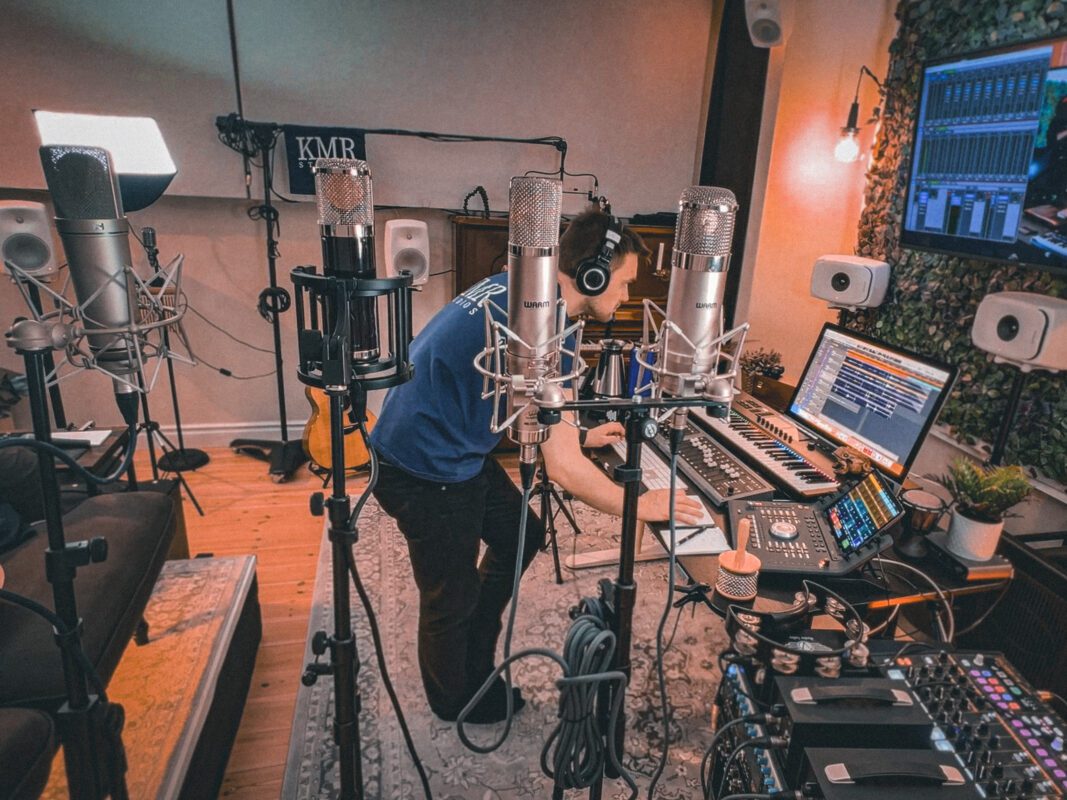
Summary
Our next purchase for the studio will be a WA-CX12, that’s for sure. However, it doesn’t have to be your next microphone. As mentioned above, there are many things to consider when buying a new microphone. Our test and this article are primarily intended to give you insight into our process of choosing gear for the studio and to inform about how tube microphones can be used, hopefully inspiring your process as well. Do not hesitate to contact us if you have any questions!
What is a Tube Microphone?
A tube microphone is a special type of microphone that uses vacuum tubes (also called electron tubes) to amplify sound. Here are some key points about tube microphones:
-
Warm Sound: Tube microphones are known for providing a warm and rich tone. They have a natural compression and harmonic distortion that can produce a pleasant sound.
-
Tube Technology: Inside a tube microphone, there is one or more vacuum tubes. These tubes act as amplifiers and give the microphone its characteristic sound.
-
Sensitivity to Overloading: Tube microphones are more sensitive to overloading than modern FET microphones (like the Neumann U87). This can be an advantage or disadvantage depending on the usage situation.
-
Applications: Tube microphones are often used in professional recording studios for vocals, instruments, and voice recordings. They provide a vintage feel and are popular among sound engineers and artists.
More in Music Production
What is a good tube microphone?
Read about the extensive test of various tube microphones we [...]
The Most Common Audio File Formats
This article tells about the most common audio file formats. [...]
21 tips about mixing
We list 21 simple tips and tricks for more effective [...]
10 myths about compression
What is true and false about compressors? We dispel 10 [...]
Contact Us

CONTACT US
OUR PORTFOLIO
LISTEN IN DOLBY ATMOS
LISTEN IN STEREO

 Svenska
Svenska
